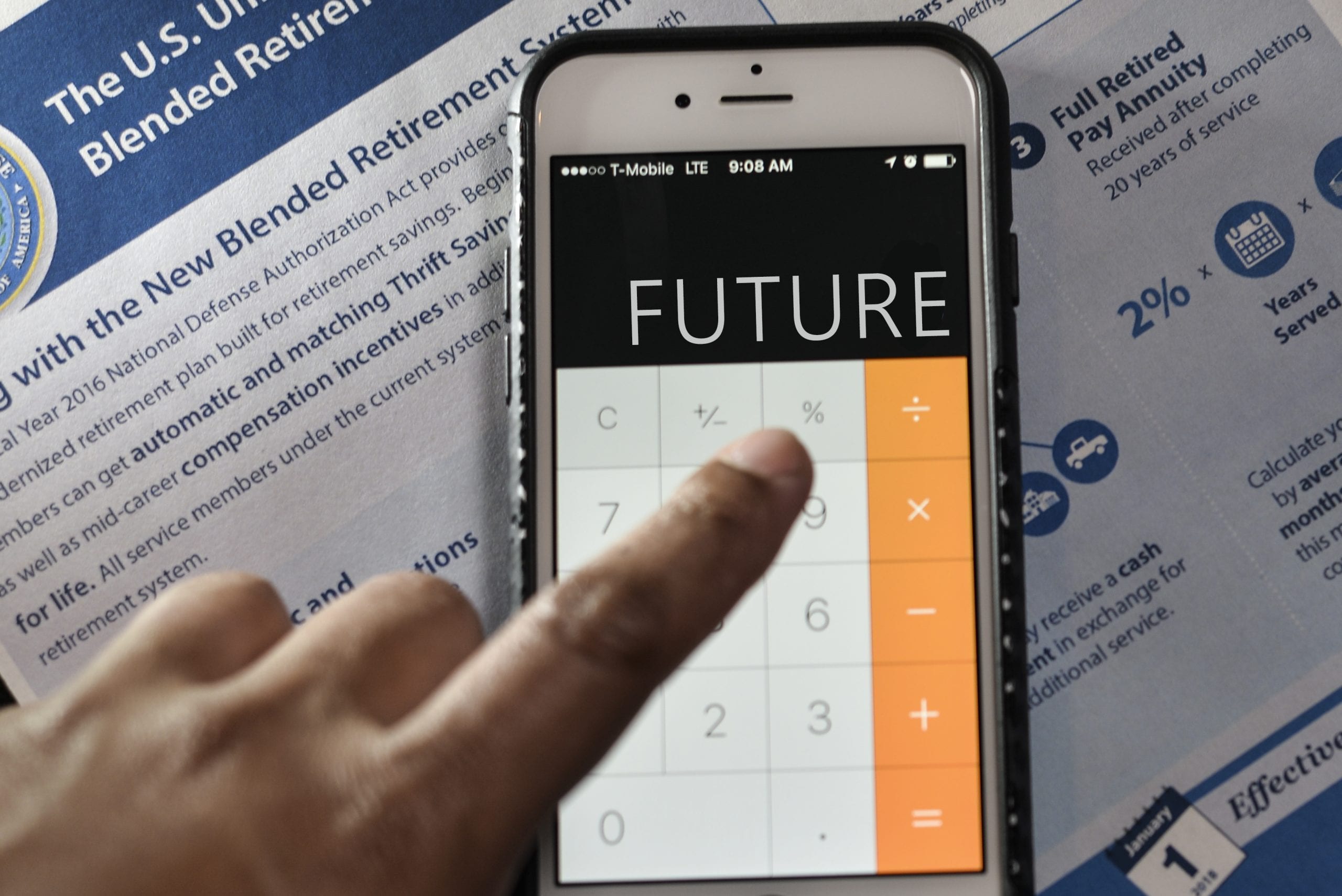By Barbara O’Neill, Ph.D., CFP®, Rutgers Cooperative Extension, [email protected]
Military Personal Financial Management (PFM) program personnel have an opportunity to change the lives of the military families that they serve. In the case of young enlisted military personnel, the potential exists for them to become millionaires through a combination of regular savings and compound interest.
Even small dollar amounts will grow to 5-, 6- or 7-figure sums with decades of compound interest. Math genius Albert Einstein was so impressed with this concept that he called compounding the “8th wonder of the world.”

U.S. Air Force illustration/Staff Sgt. Alexandre Montes
A savings account for emergencies and a tax-deferred Thrift Savings Plan (TSP) retirement account are two great places to save. Service members who save $4,000 annually (about $77 week) at a 7% average annual return will have almost $850,000 in 40 years according to the Bankrate Compound Interest Calculator.
When an employer matches young adults’ savings, they can easily become millionaires! With the new Blended Retirement System (BRS) that went into effect in 2018, service members may receive up to 4% in matching contributions, on top of a 1% automatic contribution, until they reach 26 years of service.

Flickr [Piggy Bank by 401(K) 2012, January 20, 2012, CC BY-SA 2.0] Retrieved on January 6, 2015
- Save a Dollar a Day- Put a dollar a day, plus pocket change, into a can or jar. At the end of each month, they’ll be about $50 to deposit into a savings account. Financial planners advise saving 3 to 6 months expenses for emergencies but any amount of savings is better than none. As services members’ pay increases, they might save $3, or even $5, a day, plus loose change (about $120 and $180 monthly).
- Live Below Your Means– Track expenses for a month or two to identify spending leaks and to “find” money to save. David Bach, author of The Automatic Millionaire, calls these expenses the “Latte Factor™” because many people spend $5 (or more) a day on fancy coffees, fast food, and similar “impulse” items. This calculator can help users identify their personal “lattes” so they can save this money instead.
- Make Savings Automatic– Automate savings because people are less tempted to spend money if they don’t see it. Automated strategies include: transferring a set amount from a checking to a savings account, making payroll deposits to a credit union, and transferring a set amount directly each month from a bank account to a mutual fund or stock dividend reinvestment plan (DRIP).
- Complete a Savings Challenge– Aim to finish savings challenges, like the 30-Day $100 Savings Challenge, 15-Week Savings Challenge, 52-Week Money Challenge, and 50-week $2,500 Savings Challenge. Challenges provide a savings goal, a designated time frame, and suggested daily or weekly savings deposits. PFM personnel might consider adding wrap-around briefings and prizes to actively encourage participation.
- Contribute to Tax-Deferred Retirement Plans– Contribute as much as possible to the Thrift Savings Plan (TSP) and/or open an Individual Retirement Account (IRA). The earlier people start saving for retirement, the more time their money has to grow, even if it is a small sum. TSP and tax-deductible traditional IRA deposits and earnings are taxed upon withdrawal. Roth IRAs have no up-front tax deduction but earnings are tax-free after age 59 ½ for accounts open at least 5 years.
- Earn “Free Money”- Try to save at least the maximum amount of money that can be matched. This is “free money” that should not be passed up. Dollar for dollar matched savings is like getting a 100% return on an investment. When pay increases, raise the TSP contribution, which can raise matched savings. TSP savings plans in the BRS offer four benefits: employer matching, a federal income tax write-off, ongoing tax-deferral, and automatic deposits via payroll deduction.




![Blog Post Image: Pexels [Silhouette Photo of Jumping Children, photo by Margaret Weir, Sept. 22, 2017, CC0]](https://oneop.org/wp-content/uploads/2024/04/pexels-margaret-weir-620530-600x403.jpg)










